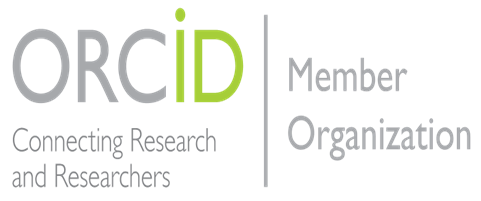The Importance of Non-Verbal Communication in Mediation
DOI:
https://doi.org/10.70193/ijlsh.v2i1.216Abstract
Non-verbal communication is a critical component of dispute resolution, particularly in mediation. A thorough understanding of non-verbal cues enhances the ability of mediators and involved parties to interpret emotions, recognise cultural differences, and appreciate underlying values. This article examines the significance of non-verbal communication in mediation, emphasising its role in facilitating effective resolutions and mutually beneficial agreements. The research argues that a deeper awareness of non-verbal interactions enables mediators to interpret participants’ intentions better and strengthens their ability to foster collaboration and guide disputes toward satisfactory outcomes. Furthermore, it highlights how mastering non-verbal communication enhances the mediator’s professional and interpersonal effectiveness, ultimately improving the human aspect of the mediation process.
Downloads
References
Barthes, R. (1970). Empire of Signs. Translated by R. Howard. London: Jonathan Cape.
Braa K. and Vidgen R. (1999). Interpretation, intervention, and reduction in the organisational laboratory: a framework for in-context information system research. Accounting, Management & Information Technology.
Castells, M. (2007). Mobile Communication and Society. Massachusetts: MIT.
Chandler, D. (2002). Semiotics: The basics. New York: Routledge.
Charkoudian, L. (2012). Just My Style: The Practical, Ethical, and Empirical Dangers of the Lack of Consensus about Definitions of Mediation Styles, Negotiation and Conflict Management Research [Online], 5 (4), pp. 367-383. Available at: https://doi.org/10.1111/j.1750-4716.2012.00113.x. [Accessed: 11 november 2023].
Coelho, C. (2021). Human body in Indian context—Body language of “nonanthropologist” Mahatma Gandhi. Academia Letters. Article number 3571. [Online] Available at: https://encurtador.com.br/inOTy [Accessed 2 October 2024]
Curran, D. (2015). Workplace Mediation in Ireland: Bridging the Research-Practice, SMU [Online], 2 (1), pp.175-186. Available at: https://mural.maynoothuniversity.ie/5835/7/DC-Workplace-2015.pdf. [Accessed: 08 September 2024].
Claudiu (2019). Effective Techniques for Approaching Communication in Mediation. Journal of Law and Administrative Sciences No.12/2019. Available at: https://jolas.ro/wp-content/uploads/2019/12/jolas-no.12.pdf [Accessed: 05 October 2024].
Eco, (1999) Kant and the Platypus: Essays on Language and Cognition. London: Secker and Warburg.
Ekman, P. (2007). Emotions revealed: recognising faces and feelings to improve communication and emotional life. 2 ed. New York: St. Martin’s Griffin.
Ellis, K. (2021). Nonverbal Presentation in a Mediation Session, North Texas Journal of Undergraduate Research [Online], 2 (1). pp. 1-5. Available at: https://doi.org/10.12794/journals.ntjur.v2i1.204. [Accessed: 8 september 2022].
Fisher, R. and Ury, W. (2011) Getting to Yes. New York: Penguin Books.
Göran, G. (2012). Pragmatism vs interpretivism in qualitative information systems research, European Journal of Information Systems [Online], 21 (2), pp.135-146. Available at: https://doi.org/10.1057/ejis.2011.54. [Accessed: 17 july 2024].
Janečka, M. (2021). Exploring Communicative Gestures in Czech Persons with Diagnosed Aphasia, Research in Language [Online], 19 (1), pp. 15-32. Available at: https://doi.org/10.18778/1731-7533.19.1.02. [Accessed: 19 June 2024].
Johnston, M. P. (2014). Secondary data analysis: A method of which the time has come, Qualitative and Quantitative Methods in Libraries [Online], 3 (3), pp. 619-626. Available at: https://www.qqml-journal.net/index.php/qqml/article/view/169/170. [Accessed: 07 September 2024].
Kaufman, Agnes. An Alternative to Litigation – Mediation and the Impact of Non-Verbal Communication. Mediation.com, April 30, 2021, Available at : https://mediate.com/an-alternative-to-litigation-mediation-and-the-impact-of-non-verbal-communication/
Kenny, T. (2014). Developing the Conversation about Workplace Mediation, Journal of Mediation & Applied Conflict Analysis[Online], 1 (1), pp. 57-74. Available at: https://mural.maynoothuniversity.ie/4676/7/TK-developing-2014.pdf [Accessed: 20 June 2024].
Madonik, B. G. (2001). I Hear What You Say, But What Are You Telling Me?: The Strategic Use of Nonverbal Communication in Mediation. San Francisco: Jossey-Bass.
Mayer, B. (2004). Beyond neutrality: Confronting the crisis in conflict resolution. San Francisco, CA: Jossey-Bass.
Moore, C. W. (2014). The Mediation Process. San Francisco: Jossey-Bass.
Patterson, M. L., Fridlund, A. J., & Crivelli, C. (2023). Four Misconceptions About Nonverbal Communication. Perspectives on Psychological Science, 18(6), 1388-1411. https://doi.org/10.1177/17456916221148142
Portere, V. (2024). Communication in Mediation. Volume 15 (2024): Issue 1 (November 2024) Available at: https://sciendo.com/issue/ACPRO/15/1 [Accessed: 08 october 2024].
Sarbo, J. J. and Farkas, J. I. (2013). Towards Meaningful Information Processing: A unifying representation for Peirce’s sign types, Signs - International Journal of Semiotics [Online], 7. pp. 1–44. Available at: https://tidsskrift.dk/signs/article/view/26871. [Accessed: 27 April 2024].
Sieriakova, I. (2016). Nonverbal Semiotics of Discursive Practices, Science and Education a New Dimension. Philology [Online]. 4, pp. 73-76. Available at: https://seanewdim.com/wp-content/uploads/2021/03/Nonverbal-Semiotics-of-Discursive-Practices-I.-Sieriakova.pdf [Accessed: 25 march 2024].
Smith, A. L. and Smock, S. D. (2008). Managing a mediation process. Washington: United States Institute of Peace. Available at: https://www.usip.org/sites/default/files/file/managing_mediation_process.pdf. [Accessed: 11 September 2024].
Thompson, J., Ebner, N. and Giddings, J. (2017). Nonverbal Communication in Negotiation, In Honeyman, C. & Schneider, A.K. (eds.) The Negotiator's Desk Reference. St Paul: DRI Press. pp. 449-470. Available from: https://papers.ssrn.com/sol3/papers.cfm?abstract_id=3136798. [Accessed: 11 September 2024].
Thompson, J. (2015). Nonverbal Communication and the Skills of Effective Mediators: Developing Rapport, Building Trust, and Displaying Professionalism. Doctor dissertation. Griffith University. Available at: https://research-repository.griffith.edu.au/server/api/core/bitstreams/e7565681-a52e-5509-b82b-01e1acec35fd/content. [Accessed: 25 march 2024].
World Health Organization (2024). Available at: https://www.who.int/ [Accessed: 10 November 2024].
Downloads
Published
How to Cite
Issue
Section
License
Copyright (c) 2025 International Journal of Law, Social Science, and Humanities

This work is licensed under a Creative Commons Attribution 4.0 International License.














